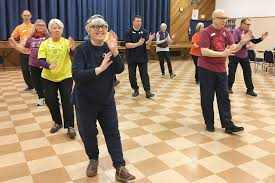Dancing benefits
- Studies have found that dancing can improve balance, gait, walking speed, and reaction time, as well as cognitive and fine motor performance.
- Dancing may help people with Parkinson’s disease, which is characterized by rigid muscles, slowed movement, and impaired balance.
- Dancing has been shown to reduce depression, anxiety, and stress and boost self-esteem, body image, coping ability, and overall sense of well-being.
- Dancing is good for heart health and weight control.
106
322 reads
CURATED FROM
IDEAS CURATED BY
The idea is part of this collection:
Learn more about health with this collection
How to synthesize information from multiple books
How to analyze a book
How to set reading goals
Related collections
Similar ideas to Dancing benefits
Health benefits of dance
- Boost Memory
- Improve Flexibility
- Reduce Stress
- Diminish Depression
- Help Your Heart, especially for those at risk for cardiovascular disease.
- Helps to Lose Weight
- Improves Balance. Frequent dancin...
Benefits Of Tai Chi
- It may help with reducing stress, though most evidence is anecdotal.
- Improves mood if you are depressed or anxious.
- Better sleep as it may leads to a more restful sleep.
- Promotes weight loss.
- Improves cognition in older adults
Read & Learn
20x Faster
without
deepstash
with
deepstash
with
deepstash
Personalized microlearning
—
100+ Learning Journeys
—
Access to 200,000+ ideas
—
Access to the mobile app
—
Unlimited idea saving
—
—
Unlimited history
—
—
Unlimited listening to ideas
—
—
Downloading & offline access
—
—
Supercharge your mind with one idea per day
Enter your email and spend 1 minute every day to learn something new.
I agree to receive email updates
